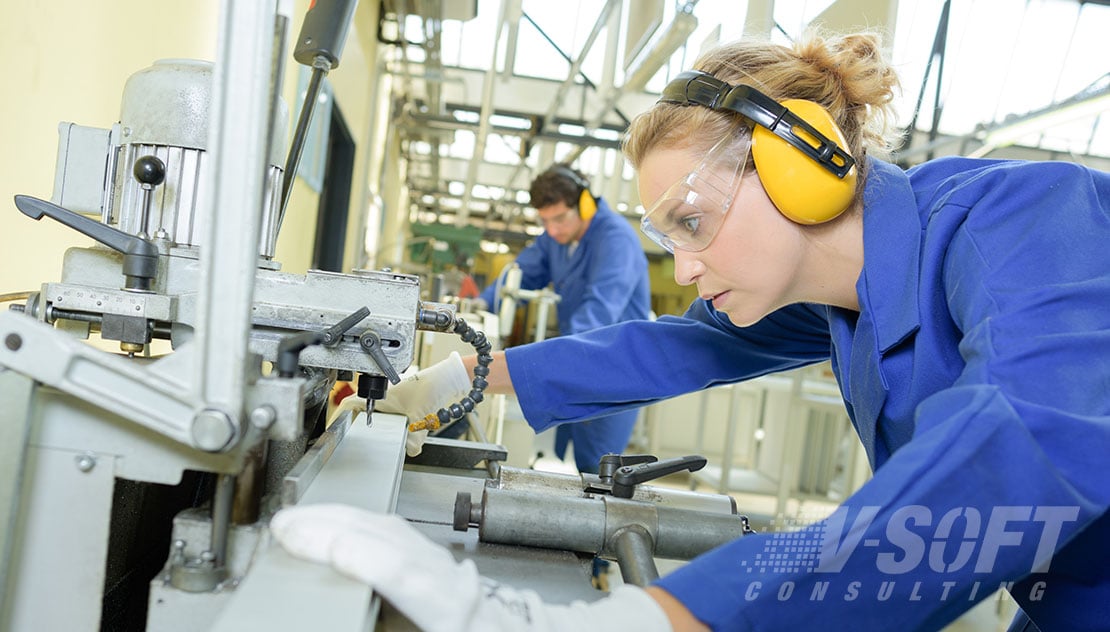Manufacturing businesses often have hundreds of moving parts and coinciding departments to get the job done. Manufacturing plants require hundreds of workers to manage routine tasks and lots of managers to manage employees, facilities, costs, and logistics. With so many moving parts involved in manufacturing, there are many ways the industry can benefit from Artificial Intelligence (AI). Here we explain some use-cases of AI in Manufacturing and how those use cases are reducing costs and time and increasing safety.
Understanding Artificial Intelligence in Manufacturing
By 2021, 77% of retail companies will be deploying AI. If deployed, the cost savings that they would realize is 88% with a 75% improvement in overall customer satisfaction.
- Gartner
AI encompasses a wide variety of technologies that manufacturers can benefit from. We won’t go into each of these here, but you can learn more about them with the links below:
To dive deeper into practical and beneficial AI technologies for manufacturing, let’s focus on key business outcomes and use cases.
Defect Detection and Quality Assurance
Manufacturing, by definition means making large quantities of products. With large quantities come large opportunities for error. Manufacturing operations often have a robust Quality Assurance department made of employees who are physically checking products. Now we’ve factored in another opportunity for error: humans.
This is where AI can significantly increase productivity and reduce errors. By applying defect detection technology to the quality assurance process, cameras are used to monitor every part of a product on an assembly line, automatically diverting any products with defects. The increase in automation reduces errors and the need for human workers which in turn offsets the cost of the new technology.
Computer Visioning and PPE Detection

Another important yet costly part of the manufacturing process is safety management. Whole departments are dedicated to worker and facility safety. In most facilities, workers are required to wear Personal Protection Equipment (PPE). PPE consists of everything from hard hats and goggles to gloves, face masks, and ear plugs. There is a huge cost to companies if employees do not wear the proper PPE, potentially a grave cost. Manufacturers employ safety managers and safety captains to ensure requirements are met however, this also opens up companies to human error.
AI-powered cameras can be installed to monitor employee PPE. This process can be two-steps. First, installing cameras in the entry checkpoints of a facility. This decreases the need for manual checks by humans and instead only requires someone to be notified if a PPE violation is detected. The second step is continues monitoring of the facility to make sure employees continue to wear all required PPE and are in the regulated areas of the plant.
Office Automation for Facility Management
An often overlooked but equally as costly part of manufacturing overhead is the cost of facility management. Office Automation technology consists of computer visioning, natural language processing and IoT to manage the many facilities on any manufacturing campus. With many facilities comes many challenges. Here’s how AI technologies can help:
Computer Vision: Know where employees are. Is the conference room free? Is the storage hub D being used? Over time, AI technologies can understand and provide feedback on how to utilize certain facilities based on behavior patterns. AI has the power to find solutions that humans don’t see.
Administration Automation: Decreasing the need to complete redundant tasks frees up human to focus on more critical tasks. Like any industry, manufacturing has many administrative functions that can benefit from office automation.
Tasks that can be easily automated:
- Record action items and meeting minutes
- Record attendance
- Respond to FAQ emails
- Schedule meetings
- Order supplies
- Anticipate IT problems
- Create and file invoices
AI is a robust technology that can be applied to manufacturing businesses to automate operations and maintain safety measures all while reducing overhead cost.
















